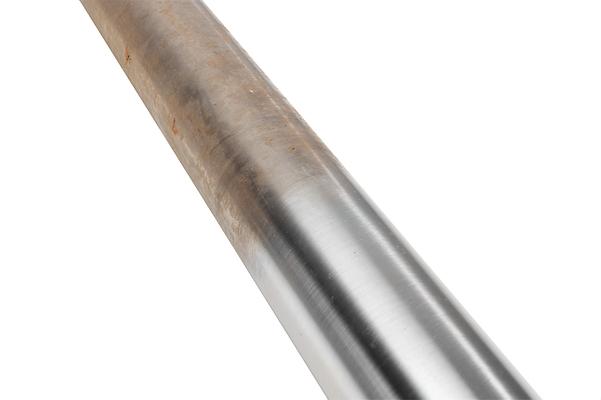Stainless steel is naturally able to resist rusting because of a passivated chromium oxide layer that forms on the surface. The formation of this layer is called passivation. When anything is done to the stainless such as sanding, wire brushing or welding the passivation layer is destroyed and exposes the metal to corrosion. In order to restore the corrosion resistance of stainless steel, heat tint and other contaminants must be removed.
There are three ways to remove contaminants mechanically, chemically or electro chemically.
Mechanically – this is when abrasives or wire wheels are used to remove heat tint. The issue is you cannot guarantee you remove all the contaminants and it takes up to 72 hours to rebuild the chromium oxide layer. If any contaminants are left when the chromium oxide layer if being built, they form tunnels that will lead to surface rust.
Chemically – the use of pickling paste is the most popular way of passivating a surface.
These chemicals are harmful to use for both the end user and the environment. When using these chemicals on a large scale, they must be rinsed with water, which is then deemed hazardous waste.
When using these chemicals, it is recommended that the user wears a full hazmat suit and appropriate respirator. Passivation takes place almost immediately.
Electro chemically – these are units such as Surfox, Capital Weld and Tig Brush. This process super cleans the surface and allows the chromium oxide layer to be rebuilt without any impurities. It is the only system that allows the end user to meet ASTM 967-05 which is the standard that is called for in most stainless steel contracts. Once the cleaning is completed, it takes from 12 to 24 hours for the chromium oxide layer to rebuild.
In conclusion, when we do something to stainless steel we must ensure that the surface is passivated so that it will not rust.
By: Craig Cooley Abrasives Specialist



